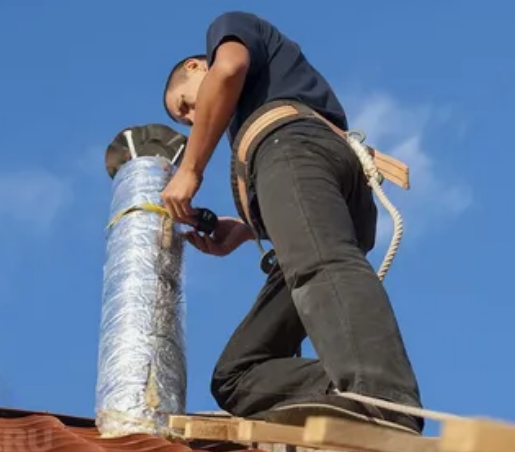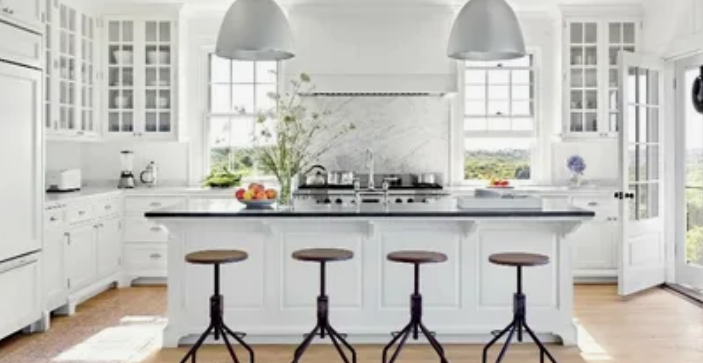What Is Crawl Space Insulation and Why Does It Matter?

Strong 8k brings an ultra-HD IPTV experience to your living room and your pocket.
Crawl space insulation might not be the most glamorous part of your home, but it plays a crucial role in energy efficiency, indoor air quality, and home comfort. If you’ve ever wondered why your floors feel cold in winter or noticed high energy bills with no obvious cause, your crawl space might be the culprit.
In this blog post, we'll discuss all you want to know regarding crawl space insulation—why you should do it, what's available, and how to get it done correctly.
What Exactly Is a Crawl Space?
A crawl space is a narrow, unfinished area between the ground and the first floor of a home. It usually provides access to plumbing, electrical wiring, and HVAC systems. Depending on how it’s built, it might be vented (open to the outside air) or unvented (sealed off from the outside).
Though it's out of sight, a crawl space can have a huge impact on your home’s performance.
Why Should You Insulate Your Crawl Space?
Here are a few big reasons:
1. Energy Efficiency
Uninsulated crawl spaces let outside air impact your indoor temperature. During winter, cold air penetrates beneath your floors, forcing your heater to work overtime. During summer, hot, humid air can boost your cooling load.
2. Moisture Control
Insulation and a vapor barrier can prevent moisture accumulation—a prime source of mold, wood decay, and insect infestation.
3. Increased Comfort
Crawl spaces insulated will keep indoor temperatures more stable, so goodbye to cold floors on winter mornings or rooms that just don't feel right.
4. Improved Air Quality
Because air from the crawl space can travel up into your living space, having it sealed and dry assists with overall home air quality.
What Are the Different Types of Crawl Space Insulation?
There are a few types of insulation that are typically found in crawl spaces:
1. Fiberglass Batts
These are pre-cut fiberglass sections that are installed between floor joists. They are simple to install but can trap moisture if not sealed correctly, and this may result in mold and sagging.
2. Spray Foam Insulation
Spray foam expands to seal gaps and become a tight fit. It's great at air sealing and has a high R-value per inch. It's more costly but outperforms all other products.
3. Rigid Foam Board
They are made of polyisocyanurate or polystyrene and installed on crawl space walls or floors to insulate and moisture-protect. They're an excellent option for unvented (sealed) crawl spaces.
4. Mineral Wool (Rock Wool)
Fire-resistant and water-resistant, this insulation is an excellent option for some climates. It's not as popular but gaining traction because it's so durable.
Do You Insulate the Crawl Space Ceiling or the Walls?
This is one of the largest questions for homeowners. The solution hinges on whether your crawl space is vented or unvented.
✅ For Vented Crawl Spaces:
Insulate the floor over the crawl space (i.e., the crawl space ceiling).
Use fiberglass batts or Platinum spray foam between joists.
Install a vapor barrier on the crawl space floor to manage moisture.
✅ For Unvented (Sealed) Crawl Spaces:
Insulate the walls of the crawl space, not the ceiling.
Use rigid foam board or spray foam on walls.
Install a vapor barrier across the floor and seal it to the walls.
Think about conditioning the crawl space with limited airflow from your HVAC system.
What's the Right R-Value for Crawl Space Insulation?
The R-value is insulation's measure of resistance to heat flow. The correct R-value will depend on your climate zone:
Cold climates (Zones 5–8): R-19 to R-30
Moderate climates (Zones 3–4): R-13 to R-19
Warmer climates (Zones 1–2): R-11 to R-13
Your local building codes will also state minimum R-value requirements, so it's worth referencing them before you begin your project.
DIY vs. Professional Installation: Which Should You Choose?
DIY Crawl Space Insulation is doable if you're handy, have basic tools, and are working with a straightforward layout. You can save money, but it's easy to make errors—like leaving gaps or not sealing against moisture.
Professional Installation is more costly, but professionals will:
Select the optimum materials for your unique conditions.
Use proper sealing and vapor barrier installation.
Control moisture and drainage if necessary.
If your crawl space experiences water problems, electrical safety concerns, or constricted spaces, it's best to bring in the professionals.
Note: IndiBlogHub features both user-submitted and editorial content. We do not verify third-party contributions. Read our Disclaimer and Privacy Policyfor details.





